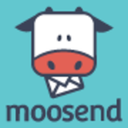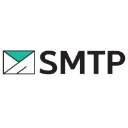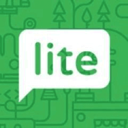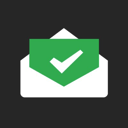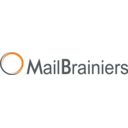Email software: purchase guide
What is Email Marketing Software?
An email marketing software or emailing software is a marketing tool composed of an interface to manage contacts, advertising campaigns and email design; as well as an email routing system that allows you to send personalized mass emails.
Email campaigns can have three objectives:
- Customer acquisition, when acquiring customers, a company relies on new contact bases to communicate with a specific target group. The intention is to turn contacts into prospects.
- Customer loyalty, sending information frequently via newsletters makes it possible to retain an audience. These campaigns also make it possible to offer products that are complementary to a previous purchase.
- Increase the commitment and loyalty of a community through a newsletter
Why Use Email Marketing Software?
The answer to this question is essentially marketing because a simple free email allows you to send emails to hundreds of recipients.
Increase volume of E-mails being sent
Mass email servers can handle thousands of mailings without being blacklisted because they comply with good Web practices: IP preheating, adhering to charters, the timing of mailings, etc.
Improve the Targeting Process
Emailing tools are equipped with a contact manager that allows users to segment emails according to specific criteria (age, gender, registration date) or even dynamic criteria such as the number of hits or clicks.
Marketing automation
Email marketing software also makes it possible to automate the sending of mass emails by scheduling advertising campaigns, autoresponders or the RSS-to-email function, which triggers a message when an article is published, for example.
Emailing software can also be used to automate certain tasks such as opting out, cleaning databases, creating reports for performance monitoring, etc.
Results
E-mails are more appealing, more targeted, more relevant and tracked so the result is necessarily better than with a classic free tool in terms of click rate, opening rate, delivery and engagement.
Emailing solutions have the advantage of maximizing the delivery of emails so that they are not considered as "spam" thanks to continuously improved routing techniques.
Responsive Design
These tools also include the design of responsive emails (adapted to the screen of mobile phones).
What are the Features of Email Marketing Software?
Emailing solutions offer all the following basic functions:
- Management of contact databases with import and export
- Contact segmentation
- Management of opt-in and opt-out
- Design of emails (sometimes called mailing kits)
- Monitoring campaign performance
- Mass emailing
Other less common features are found in some programs:
- A/B Testing to assess different messages for the same campaign
- Targeting or the ability to address all and only the right people
- The personalization of the proposed contents
- The integration of emailing into a more general marketing scenario
- The autoresponder
- The creation of Landing Pages
- Webinar management
How to Choose an Emailing Tool?
When selecting an emailing tool, it is essential to know precisely the needs of the company and take into consideration the functional coverage that this software offers.
This will make it easier to choose an emailing software: how many emails are sent each month? To how many contacts? Can these figures evolve more or less quickly?
Today, many software editors offer the same results. However, the included features are very different from software to another. If you are looking for a software that will allow you to make Landing Pages then you will have only have a few choices as GetResponse and Mailchimp are the leaders on this feature.
The appvizer comparator is a good way to compare email marketing software. It allows you to compare the features of different email marketing solutions such as marketing automation, A/B testing, responsive design, deliverability testing, segmentation parameters, available forms…
Indeed, it will be easier to make a selection after comparing the features of the best software on the market.
Guides, Advice and Best Email Marketing Practices
Emailing software makes it possible to send emails to large volumes of contacts simultaneously or at different times.
In addition to volumes that can reach several million recipients per month, emailing software has several qualitative advantages. It allows you to format emails with images, tables, and action buttons and maximize message relevance through segmentation, text customization, and scenarios.
To know everything about this branch of direct marketing, find our guides on email marketing.
Today, there is a large number of email marketing software on the market. The key players promote the efficiency of their emails, the ergonomics of email design, and the quality of campaign tracking.
However, the main differentiating factor today lies in the marketing tools available that lets users enhance their contact bases to carry out relevant actions. This is particularly the case for e-commerce companies that regularly cross-sell after a first visit or purchase.
The emailing market is stable, but the possibilities for new services are evolving. The volume of emails sent has been virtually stable since 2013 at 135 billion e-mails sent per year.
Setting Up an Email Marketing Platform
Project management in the context of acquiring an emailing solution is relatively simple, as it does not require any specific integration.
The implementation of an emailing solution consists mainly in cleaning the contact databases, most often in Excel, to carry out a single import of all the data into the solution without generating losses. It is necessary to anticipate a full working day for cleaning, sorting the imports, and the import itself.
The second part of project management consists of creating the different email templates that will serve as the basis for designing the emails sent. This work must respect current messaging standards: the code must be optimized so as not to turn into spam while adapting to different types of screens. Then, the graphic design will create a Corporate standard in order to create a real brand image.
Configure the SPF and DKIM to Optimize its Delivery Performance.
Some applications allow you to send emails via a personalized domain name (example.com). To do this, you must configure the SPF (Sender Policy Framework) which allows you to validate the ownership of this domain. The Domain Keys Identified Mail (DKIM) must also be configured to identify the sender of the emails. This makes it possible to effectively control spam and phishing.
The SPF and DKIM are configured in the administration system of the domain name manager (OVH for example).
Create an Effective Emailing Campaign
In addition to the technical aspect, a successful implementation of an email marketing tool will be based on an elaborate marketing strategy and marketing tactics. This will involve setting up opt-in strategies (proactive user acceptance), scenarios to trigger sales, and varied and relevant content.







